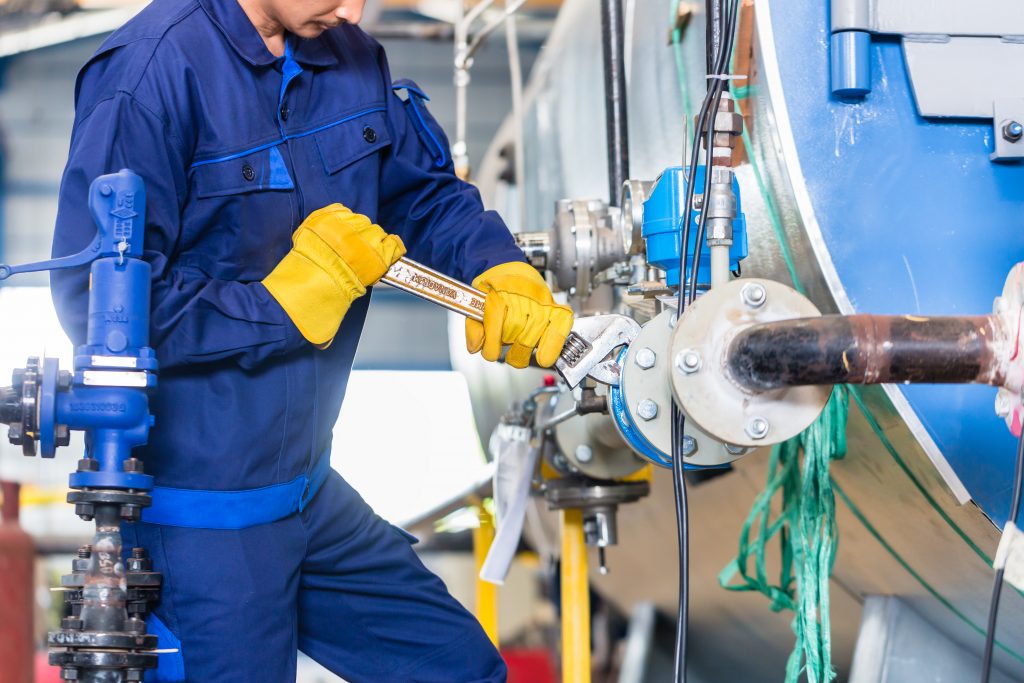
Unplanned machine downtime can disrupt operations, cause unnecessary costs and affect downstream processes. Find out about the most common causes of machine downtime, its effect on your revenue, and proactive strategies that can improve equipment efficiency and reliability.
Mechanical Failures
Mechanical failures can include issues such as component breakdowns, wear and tear, malfunctioning parts, or equipment reaching the end of its service life.
Solution: Regular maintenance can help identify potential mechanical failures and address them before they get worse. Maintenance activities can include visual inspections, testing, lubrication, calibration, and replacement of worn or damaged parts. Predictive maintenance techniques, such as vibration analysis or thermal imaging, can also detect early signs of impending failures.
Dust and other material residues can also lower equipment efficiency, clog components and eventually cause malfunction and failure. Periodic cleaning with AcoustiClean sonic horns can remove particle accumulation and prevent machine downtime.
Poor material flow
Unlike occasional equipment failures, poor material flow can happen every day. Stagnant material can lower the vessel capacity and block the vessel outlet. This can lead to reduced throughput and increased downtime. It can affect downstream processes or equipment and require operators to stop the process and assign workers to manually clear the material blocks.
The most common causes of poor material flow are bridging and ratholing.
- Bridging happens when material forms an arch or a bridge across the outlet of a storage bin, preventing the free flow of material. It occurs when the material’s cohesive or interlocking properties cause it to adhere and form a stable structure.
- Ratholing occurs when a hole or tunnel is formed within the stored material in a bin or hopper, leaving a void around the outlet area. This happens when a funnel-flow pattern develops: the central material column flows freely, but the material surrounding the perimeter remains stationary.
Solution: AirSweep promotes on-demand material flow to prevent material blocks. The powerful air pulses can move damp powders, sticky solids, and other challenging materials that are prone to bridging and ratholing.
Human Error
Operators or maintenance personnel can make mistakes that result in machine downtime. This can involve incorrect operation of the equipment, improper maintenance procedures, or mistakes during repairs or adjustments.
Solution: Proper training, clear operating procedures, and effective communication can minimize the occurrence of human errors.
Cleaning and other regular maintenance
Regular cleaning of machinery and equipment is essential to ensure optimal performance and meet industry sanitation requirements. However, it does contribute to overall machine downtime.
Solution: Clean-in-Place (CIP) technologies are automated systems and processes used in various industries to clean and sanitize equipment and piping systems without disassembling them. It removes product residues, microorganisms, and contaminants to prevent cross-contamination between batches and reduce the risk of microbial growth or product spoilage.
Aside from CIPs, AirSweep can also be used to flush the vessels clean between batches. An infant formula uses AirSweep to flush vessels between batch runs, cutting cleanup time from 40 hours to 10 hours.
Material spills and pile-up
When conveyor belts, bucket elevators, or other material transport equipment malfunction, there’s a big chance that material will spill over. If this occurs, companies face two problems: repairing the equipment, and cleaning up the mess.
Solution: For some companies, any material pile-up can lead to days of downtime. A concrete company estimates that its feeders load about 250 tons of gravel per hour, or 4 tons a minute. Even just a 10-minute malfunction could result in 30 hours of downtime. To prevent machine downtime and its catastrophic results, it installed DAZIC zero speed switches that could alert the operator of any abnormal changes in equipment speed.
Cost of unplanned machine downtime
Equipment downtime affects productivity and costs. Calculate how much your company is wasting whenever your equipment malfunctions or operates at lower efficiency.
Unplanned Downtime = (Time Asset is Down / Total Time) x 100
The cost of downtime can depend on factors like the size and complexity of the affected operations and the number of workers who are affected. You can use this formula to start your calculations, but you may need to add other variables depending on your particular process.
Cost of Unplanned Downtime = Average Hourly Wage x (Time Asset is Down/Total Time) X Number of Employees Affected
Protect your equipment and your revenue
Control Concepts, Inc. has helped thousands of plants improve their bulk material handling. Our products—AirSweep, DAZIC, and AcoustiClean—are used by companies of every size and industry. Work with us to improve productivity and reduce machine downtime.





Comments are closed